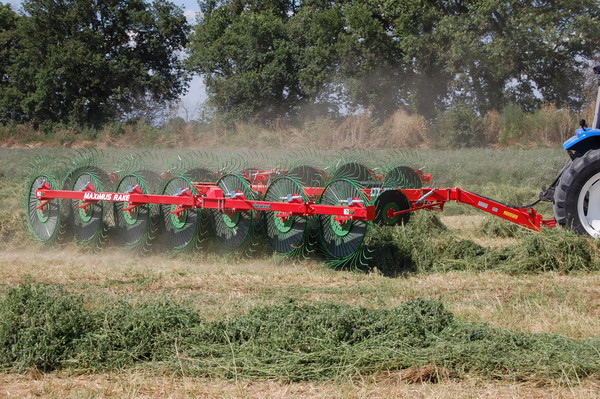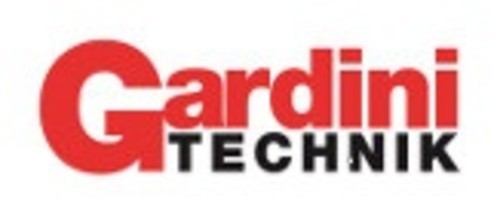
Developments in mechanics for haymaking
The movement required for natural drying in the field represents a critical step for hay quality. Specialized companies are developing, also in the context of European research programs, systems aimed at optimizing operations, preserving the best properties of the zootechnical food
The quality of dried fodder has long become essential particularly for quality agri-food productions, such as cheeses with designations of origin, as the Italian excellence represented by Grana Padano and Parmigiano Reggiano. It is now widely known that, especially in the dairy sector, the quality of fodder directly affects the quantity and quality of milk and consequently the hygienic, organoleptic and preservability characteristics of the processed product. Moreover, even more than for other
productions, the collection takes on a decisive role in terms of containing product losses. Its optimization must take into account a correct degree of forage drying combined with the way in which the working organs move the product, modulating their power according to the physical structure of the product, however reducing
the pollution made of earth, stones and other inert material, which can lead to the harmful presence of clostridia. For all this, it is clear that the quality of the forage strongly depends on the haymaking mechanization choices. However, other production
needs cannot be forgotten, such as reducing the collection cost and a timelier intervention, to be achieved with highly productive operating machinery, that is to say, characterized by high speeds and large working widths. Put simply, hay should be made (but above all harvested) “well” and “quickly”. From this point of view, machinery has recently been developed with interesting solutions in the field of mechanics and mechatronics, such as articulated parallelogram suspension of the cutting bars, rakes of particular conformation rails, sensors dedicated to the direct survey of environmental and operational parameters, etc.
Good haymaking
Haymaking is basically divided into four phases: mowing, turning, winding and pressing. Turning and swathing can be repeated several times while harvesting, according to the type of product and on the environmental conditions. The nutritional quality of the product is at its best just before mowing, also because all subsequent interventions inevitably reduce it, increasing losses among other things; in fact, the most important criteria for good haymaking are the speed of execution and the delicacy with which the forage must be treated. With the increase of the forage drying speed, the time spent in the field is reduced, limiting the losses due to cellular respiration and leaching due to possible rain, preserving the best nutritional value. In this sense, the appearance of the mowing-conditioners
has undoubtedly facilitated the operators. The way in which the product is “treated” influences the fodder loss, which is of different entity among the different components of the plant (e.g. leaves and stems). The quality of the product
is also conditioned: the delicacy with which the forage is moved during the spreading and turning is particularly important as the humidity of the product is reduced and the possibility of causing breakage of the stems and/or detachment of the leaves increases. The swath is, therefore, one of the major problems in the organization of the work site: having to operate at low speeds, the only way to increase productivity is to resort to large-width work equipment.
Innovative aspects
In recent years, haymaking sites have introduced many innovations. The German Krone has recently proposed the Swadro TS 680 Twin, a rake with two 13-arm rotors, equipped with “Lift” double- tilt lifting teeth, shaped for a more efficient and delicate action, able to reduce losses and limit pollution from the ground.
DLG has compared the performance of the new and the previous version of this machine on a first cut with an average yield of fresh fodder of about 39 t/ha, at different cutting heights (3 and 4 cm) and feed speed (between 8 and 10.5 km/h), analyzing specifically the amount of ash (to assess ground pollution) and the amount of harvesting losses. Performances concerning the ash content were the same (with an increase of 0.3% in both cases) but hay losses were lower in the case of the machinery equipped with lift teeth. In both cases, losses of products are particularly contained, but there is a greater effectiveness of the teeth with double inclination, effectiveness that becomes higher with the rise of the speed of the feed rate. The increase in cutting height leads to a modest loss rise, which nevertheless is still at a more than acceptable level (1.5% to 10.5 km / h). It should be noted
that the nutritional and energetic characteristics of the smallest quantity of lost product are equivalent to an increase in milk production that can reach 100 kg/ha. With a working width of 6.8 m, productivity is respectively 5.4, 6.8 and 7.1 ha/h for feed rates of 8, 10 and 10.5 km/h. Logically, in this context, power consumption increases, and it is slightly higher for the rake with the “Lift” teeth, or 1.3 k/m 8 km/h and 1.7 kW/m and 10.5 km/h. Thanks to the RA-Rake project (http://www.rarake.eu/) funded by the EU H2020 program, the Italian Repossi Macchine Agricole is developing a new rake, which enriches the consolidated technology of the star rotary rakes with new features. The basic idea is to equip the machine with two rows of stars of different diameters: the largest one moves the smallest, which in this way moves the forage without touching the ground. Therefore, the rake does not require complex and expensive mechanisms to move the smaller star, with consequently reduced costs, both for purchase and maintenance. In detail, each pair of working parts is composed of a rear star (with a larger diameter) which, as it is in contact with the ground, ensures the movement of a second front star with a smaller diameter, which is slightly raised from the ground and that collects the forage. This allows reducing the pollution of the product with earth, stones, and other unwanted material. The goal is to combine the typical advantages of the rakes with comb (especially the delicacy of handling the product) with that of the rakes with stars (working at high feed rates). “Ra-Rake” with its double star row breaks down the ash content in the forage while operating up to 20 km/h and at the same time reducing fuel consumption up to a maximum of 40%. Launched in July last year, the three-year project involved the development of a first prototype that is currently being tested in Italy, with the idea of verifying its effectiveness in the different operating conditions of some European countries (Austria, Switzerland, and Hungary).
Hailing and sub-contracting
Haymaking includes a series of processes that are typically carried out directly, which is to say autonomously by the individual farmer, with the means available in the company’s machinery fleet and therefore without resorting to sub-contracting. Moreover, in recent times we are witnessing an increasingly marked trend reversal.
The question is: why does such a trend occur, despite the cost of the equipment used is not prohibitive and the requested powers are still easily supplied by medium-powered tractors? In this case, the timeliness is the key factor, especially in rainy years. Thanks to the availability of high productivity machines, the
contractor can guarantee the rapid and timely execution of operations that otherwise the individual farmer could not satisfy from this point of view.
Other aspects, however not secondary, concern the agro-mechanical company workforce that is sized for the work tips and the availability of a sufficient “buffer” against the unexpected due to breakdowns of the company machinery, by virtue of a large fleet of vehicles. Community policies have undoubtedly played a significant role as they have recently imposed a certain cultural diversification on part of the company’s surface area, leading to the production of fodder to become hay, even in areas historically suited to other crops and, therefore, without the necessary operators.








